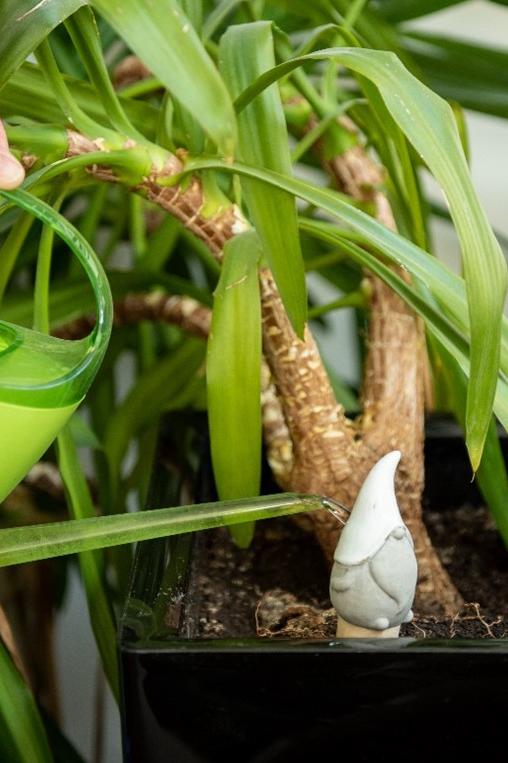Summer is the most difficult period for watering potted plants. But by following a few rules for proper watering, you should be able to keep your plants looking good well into autumn.


The amount of water your plants need varies from one species to another. Find out more about their water requirements. However, most outdoor plants require "moist but well-drained soil". This means soil that is not constantly soggy, but simply moist.
The right pots for healthy plants
- Material. Terracotta pots and hanging baskets made from coir are known to dry quickly. Metal pots capture the sun's heat and can also dry out quickly. You'll need to keep a close eye on them, and water them more often than you would plastic or glazed ceramic pots.
- Size. Wherever possible, use the largest pots or planters possible, with the largest volume of potting soil. This will retain more moisture and give the roots enough room to grow and absorb water.


Good watering habits
Watering potted plants outdoors
Potted plants suffer more than those planted in the ground. High temperatures, direct sunlight and wind can quickly dry out the soil.
- Mulch plants in pots and window boxes. This will slow down moisture loss.
- Check daily. In summer, most pot plants require daily care. Some will even need to be watered twice a day if temperatures exceed 25°C.
- Water at the right time. Either early in the morning, to give your plants time to absorb the water before the heat of the day sets in, or in the evening.
- Water when the plant needs it. Look for shrivelled leaves, limp stems, drooping petals and dry, discolored leaves. This is a sign that it's time to water.
- Water deeply: to do this, water in two stages. The first time to moisten the substrate and the second time to ensure that the water penetrates deeply and reaches the roots.
- Don't count on rain. Even if you think a shower has watered your plants, check the soil anyway. Sometimes foliage and flowers can act as an umbrella, preventing water from reaching the ground. What's more, a short rain, even if it seems heavy, may not be enough to completely saturate the soil from top to bottom.
- Fertilize regularly. Most plants will perform best if fertilized with a water-soluble fertilizer every 7 to 10 days, or with a controlled-release fertilizer once a season.


Watering houseplants
Rather than watering according to a fixed schedule, first check whether your plants need water. And treat each plant individually. Because just because one plant needs water doesn't mean all the others do. Differences in pot and plant size will have an impact on the rate at which the substrate dries out.
- Use rainwater instead of tap water, which is often too hard.
- Water slowly and deeply. Short, light watering simply squeezes water out through the drainage holes before the roots are really hydrated or the soil has had a chance to absorb the water. Slow, deep watering not only allows the water to reach the plant's roots, but also forces the overly dry soil to absorb water again.
- Bassinate your plants, i.e. soak them in a basin of water for 15 to 30 minutes to force the soil to rehydrate. This technique is particularly useful if you've forgotten to water a plant for a while and the substrate has completely dried out (it's now lifted off the pot wall).
- Water only the substrate, not the leaves. Some plants risk developing fungus or disease.
- Do not leave water in the saucers. Roots soaked in water may rot.


The right tools for better watering
Certain tools can help you look after your potted plants in summer.
- Choose a watering can suited to the size of the plant.

- Get a humidity gauge. This is a very useful tool for watering potted plants. The gauge has a probe that you push into the soil to assess its moisture level.
- Add a ceramic sprinkler cone. Especially handy if you're going on vacation for a few days. In this case, water deeply first, then fill your watering cone and press it into the substrate to draw in the necessary water.



Low-water consumption plants
If you tend to forget to water your plants, give priority to "camel" plants, i.e. those that can withstand drought more easily.
These include
- agapanthus, lavender, verbena and portulaca
- grasses, helichrysum, sedums
- succulents and cacti
